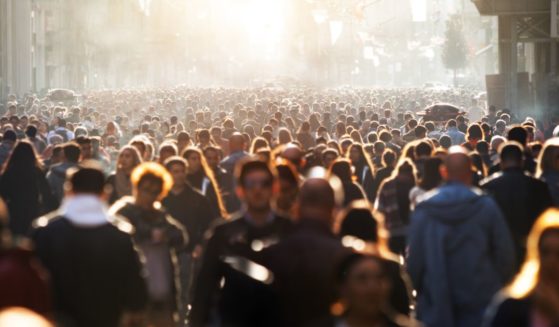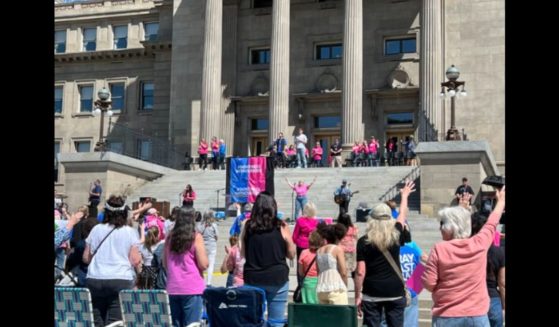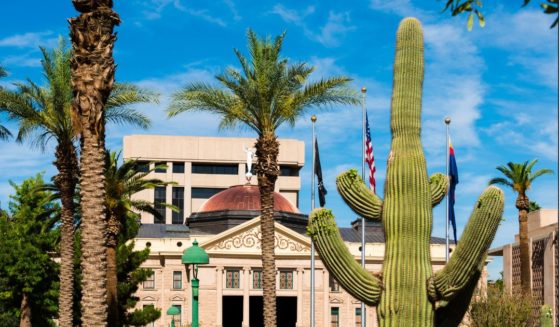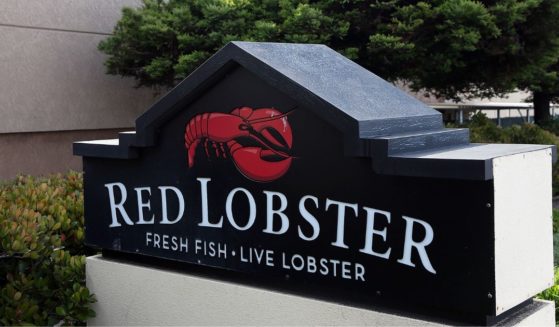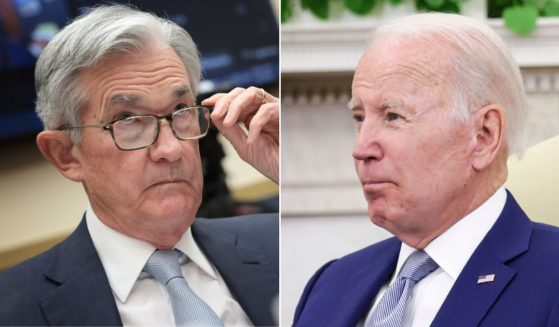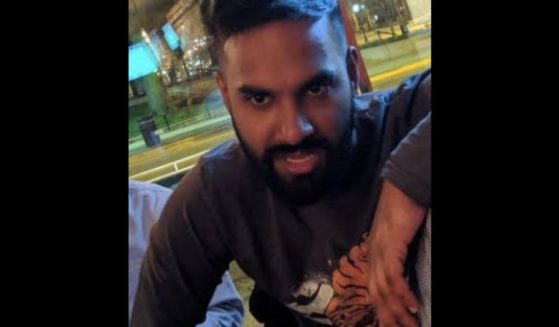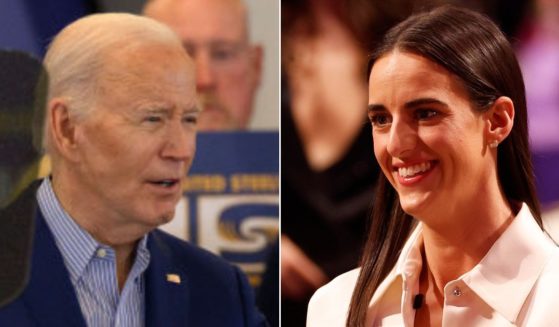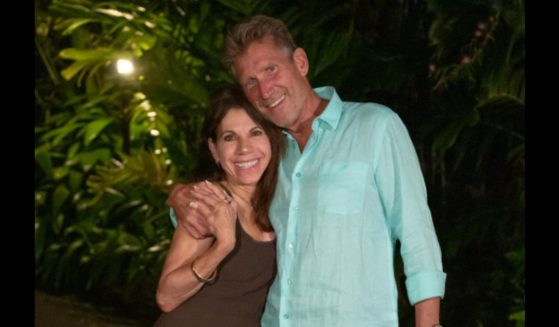Portable Army Hospital Sent To Deal with COVID Disaster in WA Closes, Never Saw a Single Patient
A field hospital set up by the U.S. Army at the CenturyLink Field Event Center in Seattle to handle overflow from hospitals dealing with COVID-19 patients closed up nine days after setup began and didn’t see a single patient, KUOW reported Wednesday.
In a statement, Washington Gov. Jay Inslee said the hospital would “be returned to the Federal Emergency Management Agency so it can be deployed to another state facing a more significant need.”
The facility, which housed 250 beds, had begun setup on March 30 and was designed to relieve hospitals in the city in case there was a surge. It was ready to receive patients on April 5 but never actually received one.
The state of Washington will continue to offer additional hospital beds in case overflow happens around the state, Inslee said.
“Though this one field hospital is being returned, state and local leaders continue to bolster resources throughout the state’s hospital and medical systems,” his statement read.
“The state has purchased equipment to support hospitals in the event Washington experiences a surge in positive Covid-19 cases, including 1,000 hospital beds and more than 900 ventilators. The state last week also finalized a lease to use the former Astria Regional Medical Center in Yakima to bolster surge capacity in Central Washington, which can support an additional 250 non-Covid patients if needed.”
The fact that the need for hospital beds was dramatically overestimated by Washington state, Inslee said, was because social-distancing measures had worked so well.
“Don’t let this decision give you the impression that we are out of the woods. We have to keep our guard up and continue to stay home unless conducting essential activities to keep everyone healthy,” Inslee said.
“We requested this resource before our physical distancing strategies were fully implemented and we had considerable concerns that our hospitals would be overloaded with Covid-19 cases. But we haven’t beat this virus yet, and until we do, it has the potential to spread rapidly if we don’t continue the measures we’ve put in place.”
“Our community mitigation measures, combined with the amazing work of our hospitals and health care providers throughout the region, as well as our procurement of various hospital supplies, lends us to believe that at this point, our hospitals should have enough capacity to support a surge in patients,” he added.
“With that said, I’m incredibly appreciative of the men and women from the 627th Hospital Center out of Fort Carson in Colorado. These soldiers uprooted their lives to help Washingtonians when we needed them most. Since then, it’s become apparent that other states need them more than we do. It’s only right that we release this capability so those states have the tools necessary to help end this nation-wide fight that we are all battling together.”
Seattle had been one of the original hotspots for the novel coronavirus, and it was feared that Washington state would be one of the hardest hit in the pandemic.
According to the influential University of Washington’s Institute for Health Metrics Evaluation model, Washington’s resource needs peaked on April 5. Even then, it predicted that 1,489 beds were needed, far less than the state’s capacity of 4,907 beds.
However, Inslee and other Washington state officials shouldn’t necessarily be blamed for bringing in extra hospital capacity, and not just because it’s better to be over-prepared than unprepared.
The IHME model, which states have been relying on to a great extent to plan their coronavirus response, seriously overestimated the amount of deaths and medical resources that would be needed at the peak.
In New York state, for instance, the initial IHME model predicted over 50,000 hospital beds would be needed on April 1. The actual number was just over 12,000. That means the IHME numbers were off by 400 percent.
This isn’t to diminish the suffering in New York, which has been immense. What the IHME model predicted would happen, however, was a medical and human catastrophe on a scale beyond imagination.
In terms of fatalities from the disease, the IHME model had a broad initial range but had pegged the nationwide death toll by Aug. 4 to be 93,531. On April 5, that was revised downward to 81,766. On Wednesday, it was revised further downward still, this time to about 60,500.
While widespread social distancing was credited with the model’s falling numbers, it’s worth noting that social distancing was baked into the calculations for the IHME from the beginning. In fact, the model assumed that every state would issue stay-at-home orders, something that hasn’t happened.
The coming “tsunami” in Washington state, it turns out, won’t be at the hospitals but at the unemployment office.
According to The Seattle Times, the state had 485,000 jobless claims as of the week ending April 4, including 170,063 from the previous week alone. To put that in perspective, during the height of the 2008 financial crisis, the state only had 316,000 active jobless claims in its system.
While the 170,063 was lower than the previous week’s number, experts say it wouldn’t last; they thought that Washingtonians might be waiting for billions in federal aid to open up before filing their jobless claim.
“Think of this leveling off as the water receding slightly prior to a tsunami,” Washington Employment Security Department commissioner Suzi LeVine told reporters during a conference call. “We’re about to see a flood of demand.”
While the official state unemployment rate officially hasn’t been updated from February’s 3.8 percent, estimates put unemployment in Washington in the low teens.
The number of people on the state’s Supplemental Nutrition Assistance Program more than doubled in a month, going from 7,777 at the beginning of March to 16,017 at the beginning of April.
At a food bank in Pierce County, a county executive says they’re seeing people who’ve never needed to turn to assistance before.
“It’s your teacher, your next-door neighbor, the guy who worked for the department store that closed,” Sue Potter, Nourish Pierce County’s CEO, told The Times. If there’s no immediate bounce-back in economic fortunes, she said, “it’s going to deplete our budget pretty quickly.”
That bounce-back doesn’t seem to be coming anytime soon in Washington, at least if you parse Inslee’s remarks about not being “out of the woods” and needing to “keep our guard up.”
Much of when America gets back to business depends on President Donald Trump, of course, but Democrat-dominated states were the first to close up and — judging by rhetoric and history — will be the last to reopen. How many Washingtonians will have anyplace to go once the state reopens is another question entirely.
Truth and Accuracy
We are committed to truth and accuracy in all of our journalism. Read our editorial standards.

